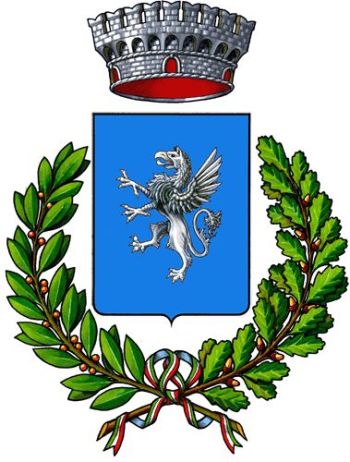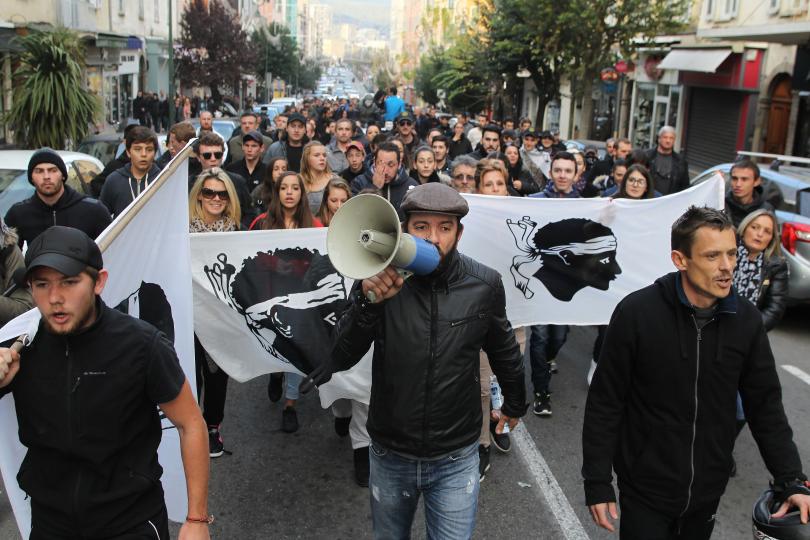Festival of Diana - August 13-15Also known as Nemoralia, Festival of Torches, and Hecatean Ides. In Stregheria it is known as the Festival of Diana. The Old Religion predates the Etruscans and Romans. Nemoralia no doubt comes from the fabled Lake Nemi. From very ancient times, Lake Nemi was known as Diana's Mirror, or Speculum Dianae to the Romans. The Goddess Diana (Diana Nemorensis: Diana of Nemi or Diana of the Wood) is deeply associated with the lake and surrounding woods. Near the temple of Diana was the sacred grove of Aricia.
A Rex Nemorensis was the name of the head of a Dianic preisthood at the temple. However this was during Roman times, and not of the time of the original Dianic tradition(s). The Temple of Diana at Lake Nemi was constructed near the north shore by the ancient Romans about 300 BCE, and was called the 'Temple of Diana Nemorensis'. Ancient Rome, just like the United States today, fostered various cults to occupy the minds of the common people. However, there is something far more spiritually essential about the pre-Roman and pre-Etruscan folkways. The ways of the mysterious Euganei; a Proto-European people of the Italian peninsula. Probably even more mysterious than the Etruscans.
 |
Roman ruins of the Temple of Diana at Lake Nemi
|
1st century BCE Roman poet Ovid described the celebration:
"In the Arrician valley,
there is a lake surrounded by shady forests,
Held sacred by a religion from the olden times...
On a long fence hang many pieces of woven thread,
and many tablets are placed there
as grateful gifts to the Goddess.
Often does a woman whose prayers Diana answered,
With a wreath of flowers crowning her head,
Walk from Rome carrying a burning torch...
There a stream flows down gurgling from its rocky bed..."
 |
A more modern statue of Diana overseeing Lake Nemi
|
1st century CE Roman poet Propertius observed the festival, apparently from a distance, and wrote to his beloved:
"Ah, if you would only walk here in your leisure hours.
But we cannot meet today,
When I see you hurrying in excitement with a burning torch
To the grove of Nemi where you
Bear light in honour of the Goddess Diana."
 |
Lake Nemi in Latium
|
Diana (mythology)
Temple of Diana (Nemi)
Nemoralia
Diana Nemorensis
Lake Nemi
Rex Nemorensis
From Nemoralia (Wikipedia) in regards to the Roman Festival of Diana:
On
this day, worshipers formed a procession of torches and candles around
the waters of Lake Nemi (the name Nemi, from the Latin nemus, means a
sacred wood or sacred grove), also known as Diana's Mirror. Hundreds
join together at the lake, wearing wreaths of flowers. According to
Plutarch, part of the ritual (before the procession around the lake) was
the washing of hair and dressing it with flowers.
It
is a day of rest for women and slaves. Hounds are also honored and
dressed with blossoms. Travelers between the north and south banks of
the lake were carried in small boats lit by lanterns. Similar lamps were
used by Vestal virgins and have been found with images of the goddess
at Nemi.
Requests
and offerings to Diana may include small baked clay or bread statuettes
of body parts in need of healing; small clay images of mother and child;
tiny sculptures of stags; dance and song; and fruit such as apples. In
addition, offerings of garlic are made to the Goddess of the Dark Moon,
Hecate, during the festival[citation needed]. Hunting or killing of any
beast is forbidden on Nemoralia.
************
The pre-Etruscan/Roman Dianic cult
I suppose that it could be an area of debate within practitioners of Stregheria as to how much latter influence should be adhered to. In truth, we really don't know a lot about the Euganei or their ancient spiritual traditions. What we do know is that during the last glacial movement, ending about 9,000 years ago, about two-thirds of Europe was covered by a mile high sheet of ice. A clearly related Proto-European lunar Goddess tradition essentially stretched from Wales to Portugal to Greece and to Bavaria. The name of the Goddess was different from region to region (Diana, Hecate, Mona, etc), and other names of the finite aspects of this tradition were different, but overall it was all closely related. Remember this was basically "a little Europe" at the time. A very similar primal people existed throughout at that time, prior to the latter incoming movements of Teutons or Mediterraneans.
The Etruscans had a mysterious culture, and brought with them their own pantheon of gods and spiritual folkways which merged with the natives. Then the Romans took over and started anew; erasing much of what had been Etruscan culture, architecture, spirituality, history, etc. They had their own, often conflated, pantheon of gods and spiritual folkways. I think it was all more planned and calculated by the Romans, while the Etruscan culture likely merged with the local native folkways in a much more organic manner. So for a modern Stregheria movement... which aspects of all this do we adhere to? While in ancient Greece, the Olympian gods seem to have been separate from the more ancient Hecate cult; in ancient Italy the whole thing was more convoluted.
While it would be exciting to explore the pantheon of Etruscan gods, there does become a confusion... especially since the latter manifestations of the Old Religion which have existed in the periphery over the centuries have their own local folkways. To a large extent, what we might call Stregheria today is a confusion of time periods and regional influences as they survived in spiritual exile from the mainstream society. In the Gaulish north, not surprisingly there is Gaulish and ancient German influences, even Slavic influences. The Goddess was called Mona, the same as in Gaul proper and other ancient northern European locales. The story of the 'Witches of Benevento' is a good example of one of the many migrating peoples on the peninsula whom had an influence on the pre-existing pagan traditions... in this case, the south-migrating Langobards.
Over the centuries there were numerous, more often small, migrations of other peoples into the peninsula. Other Europeans, and even non-Europeans in the south, either invaded to migrated and had some affect on the culture and traditions. Overall, these spiritual influences--if there were any--were probably small. One thing which is not helpful, for example, is when Raven Grimassi was attacked by some for a perception that he was speaking for all who practice Stregheria. Also, some even deny Stregheria itself, insisting that it should all be about Benecaria or something else. I think that we should approach this in the following manner:
1) Acknowledge that, although there was much in common throughout the various provinces and villages of Italy, there's enough difference that there will never be full agreement on any finite codex.2) Create levels of commonality. A chronological system where we can agree on some things, and also allow for a lot of spiritual diversity.... both individually and by small groups.
3) Proto-European witchcraft: Always acknowledge the "very ancients" from the last ice age. These were they're ways, and we're their descendants.
4) Euganei: It is essential to acknowledge that this was the primal population of Italy at one point, and they are all of our ancestors. This is the link that ties us all together, and the most important step! If we can't at least do this, then we're truly just wasting our time as far as a greater revival. We must keep this area of study and practice, pure; at least academically, and in a unifying manner. Creating a nucleus of folk-spiritual sameness of which we can all agree one.
5) Acknowledge the main contributors to latter traditions: Etruscans, Gauls, and Romans.
6) Acknowledge influences from the Middle Ages.
7) Acknowledge post-Medieval influences.
8) Allow those who are not interested in the very ancient folkways--the Euganei--to go their own way. This isn't to say that, for example, cryptic-traditions within the Church are not a big part of our history. They certainly are, but the essential basis of Stregheria must be of these ancient ancestors. I would also think the folklore of Aradia as well. If someone can't handle that, then we go our separate spiritual ways. Also, of course, there are other influences: Masonic, Hemetic, Eastern, Astrology, etc. However, at the primal heart must always be the ancient folkways! Beyond that, there can be all sorts of individually-inspired, small group, or regional flavors. Italian-Americans in New England might adopt something from earlier English pagans, or Italian-Argentines might adopt something from Basque pagans. The common American "welcome star" comes directly from Dutch/German pagan tradition. Italian-Americans in Pennsylvania might adopt that symbol to an extent. Personally, I place a little hand-made wooden red solar cross up along the trails where I usually walk, conduct ritual, alone or with others. When the early Christians were eliminating Odinic tradition from German-speaking areas, Hungary and elsewhere, the pagans would replace their old altars in the woods with a red cross to mask their holy altars in hopes that they could return to them at a later point. Of course, it never happened. So I use that same concept, using a red solar cross instead; in this case as a type of altar in of itself. There seems to be another pagan coven of some type whom places little hand-weaved hearts in the area; and I also see rocks stacked or little stone labyrinths. Meaningful things like this are fine on the surface, and don't replace the primal Stregheria which we would need to agree upon.
************
Having passed away in 2019, Raven Grimassi left us too soon. I strongly feel, despite the trail that he blazed, that there was still work to be done. I suppose that we would all feel that way when someone important to us passes... if there only was more time. We still must finally iron out a foundation as far as creating an "Aradianist Folk Revival." Basically agree on the essentials, and agree-to-disagree on the less important things.
.





















.jpg/800px-Hammer_of_Thor_(monument).jpg)















